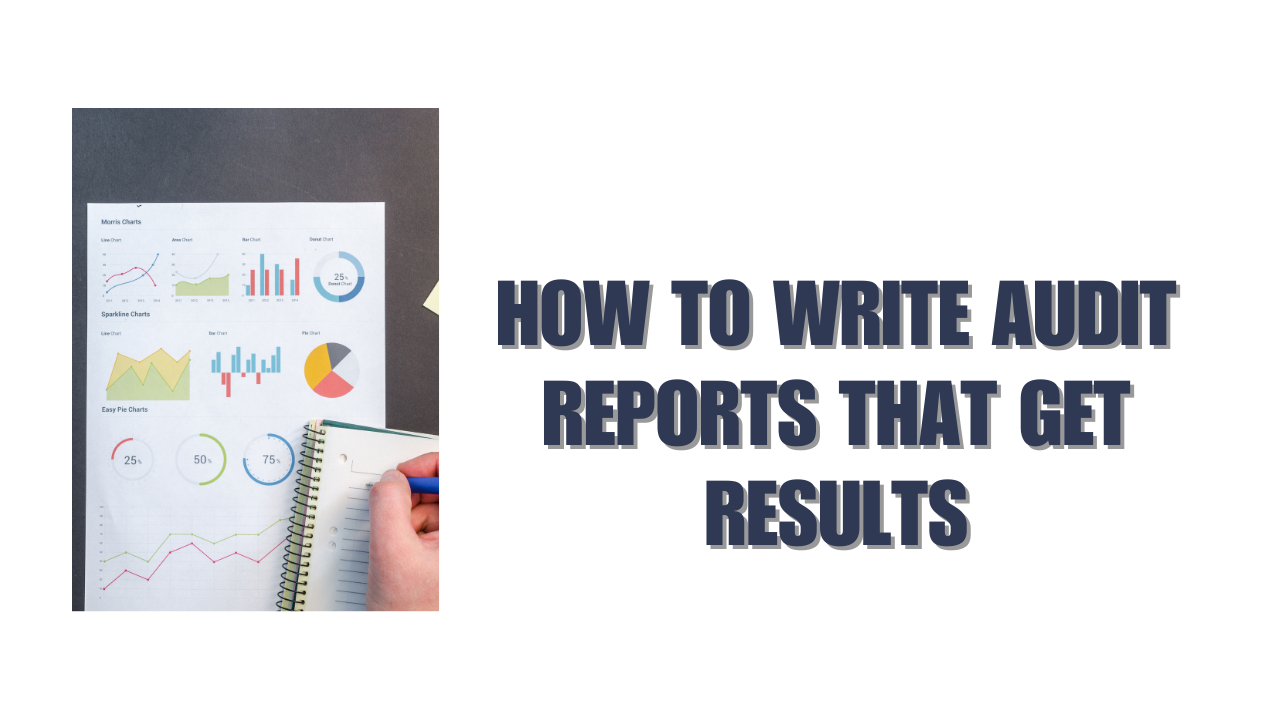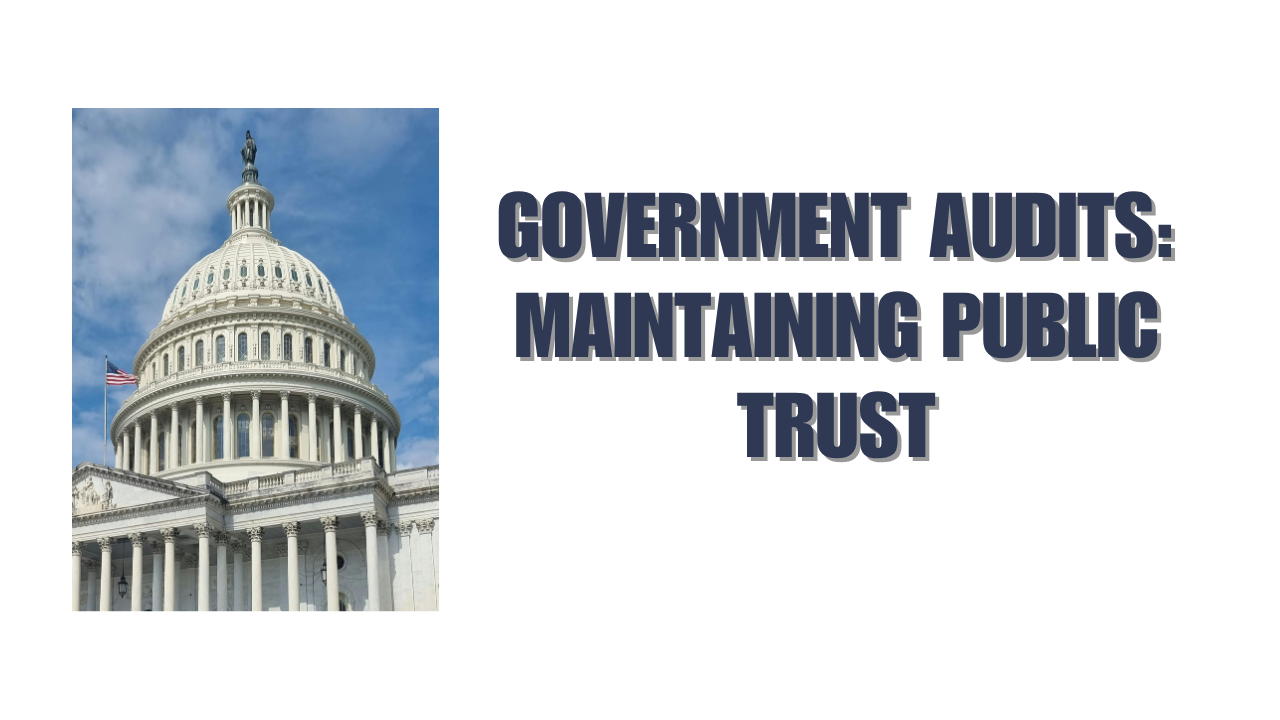Poor audit reports can lead to penalties, litigation risks, financial losses, operational disruptions, and might even put patient safety at risk.
Audit report writing goes beyond simple documentation. The stakes are high as it transforms complex findings into clear insights that drive vital decisions and maintain compliance. Bad reports create confusion, paralysis, or compliance failures. Think about an audit committee getting an incomplete picture of its cybersecurity readiness for client medical data because of a badly written report.
A well-laid-out audit report expresses major issues, gives actionable recommendations, and helps stakeholders make meaningful improvements. Learning the right audit report format and using proven audit report writing guidelines will help professionals succeed in this field.
The Institute of Internal Auditors (IIA) suggests using the Five Cs framework: Criteria, Conditions, Cause, Consequence, and Corrective Action while writing these documents. This method will give a solid foundation for your observations and drive meaningful action. The executive summary is a vital part that quickly shows senior management the audit’s critical aspects.
This piece will guide you through the complete audit report writing process. You’ll get practical templates and best practices that will help you create reports that communicate findings clearly and inspire needed changes in your organization.
Understand the Purpose and Audience of the Audit Report
The foundation of effective audit report writing starts with knowing your readers and why these reports matter. Audit reports serve as vital communication tools that connect stakeholders to the assurance and insights from your audit work.
Why audit reports matter to stakeholders
Audit reports act as crucial documents that verify an organization’s financial state and operating integrity independently. These reports affect multiple stakeholders, each with unique needs and expectations.
Shareholders and investors rely on audit reports to confirm that financial statements present the company’s position and performance fairly. This independent verification helps them make confident decisions about buying, holding, or selling company shares. Regulatory authorities use these reports to check financial reporting compliance and spot potential risks in the corporate sector.
The management team gets several benefits too. A thorough audit process often reveals ways to improve controls and processes. These observations create chances to boost operations and strengthen internal control systems. This leads to better financial results and builds stakeholder trust.
Poorly written audit reports can lead to serious problems beyond just documentation issues:
- Penalties and fines
- Increased litigation risk
- Significant financial losses
- Operational disruptions
- Reputational damage
Well-laid-out audit reports show stability and prove reliability. This attracts investors and lenders to potential investment opportunities. The confidence built through quality audit reports helps organizations get needed funding and draw key investors.
Tailoring content for executives vs. managers
Writing effective audit reports means understanding that different audiences need different information. Ask these questions to customize your reports:
- Who are the primary readers of the report?
- What do they know about the audited activity?
- How will they use the report?
- What does it all mean for the reader?
Executives prefer less detail with a quick summary of key points. The executive summary should highlight good practices seen during the audit and the most important steps management took to improve governance, risk management, and internal controls. Technical jargon and detailed internal audit methods don’t belong in executive summaries.
Process owners and managers who work directly with the audit process want to review results and recommendations thoroughly. Give this audience complete findings and specific, actionable recommendations. Note that 69% of Chief Audit Executives participate in ongoing informal discussions with audit committee chairs to learn about expectations, while 59% hold regular formal meetings with key stakeholders.
Written internal audit reports vary in style and format between organizations. Your report structure should line up with your organization’s communication templates and practices. This reflects the organization’s culture and includes input from senior management and the board.
The goal of internal audit reporting goes beyond describing findings or suggesting improvements-it aims to convince readers to act. You can maximize your audit report’s impact by adapting your communication style, format, and content to match different stakeholders’ priorities.
Structure Your Audit Report for Clarity
A well-laid-out audit report forms the foundation of clear communication with stakeholders. The way you organize and present your report will affect how others notice and act on your findings.
Title page, executive summary, and table of contents
Professional audit reports need a title page that has the audit’s title, organization name, department audited, and report date. This formal introduction builds credibility right from the start.
The executive summary is maybe the most crucial part of your report. Your concise overview should sum up the audit objectives, scope, and key findings. Busy executives can quickly grasp the most important points without reading everything. A good executive summary expresses positive practices and the steps management took to boost governance and controls.
Longer reports need a table of contents to help readers find their way through different sections. This simple addition lets readers quickly find specific information they care about.
Defining scope, objectives, and methodology
The scope and objectives section shows what your audit covers and its main goals. Professional standards say this section should:
- Define audited activities and timeframes
- Outline departments involved
- Explain any limitations or boundaries set for the audit
Your objectives statement should express the purpose and goals auditors want to achieve. Common objectives look at financial statement accuracy, evaluate compliance with requirements, and find control weaknesses.
The methodology section describes how you conducted the audit and references the auditing standards you followed. This openness boosts your report’s credibility and helps readers understand your approach.
Organizing findings and recommendations
The report’s body contains its essential substance. We organized this section around key focus areas, each with clear headings. List each finding by importance and include:
- A title and reference
- Criticality rating (high, medium, low)
- Statement of facts with supporting evidence
- Corresponding recommendations
Your audit findings should come right before their recommendations. This logical flow connects problems to solutions naturally.
Using appendices and references effectively
Appendices give you space for supporting documentation without making your main report messy. You can add detailed evidence, data tables, sample documents, or methodology explanations that might disrupt the report’s flow.
A properly organized references section makes your report look professional while documenting standards or regulations you mentioned. This approach shows thoroughness and attention to detail.
The right audit report format choices make your document more professional and help readers find supplemental data easily. Careful use of appendices and supporting information makes your reports stronger and more useful.
Write Clear and Objective Findings Using the Five Cs
A clear articulation of findings forms the foundation of good audit report writing. Auditors can present their observations through the Five Cs framework that creates well-founded, defensible findings and drives meaningful action. This method will give a detailed yet concise presentation of each finding.
Condition: What was found
Your audit’s factual situation shows the reality versus expectations through the condition. Evidence supports these direct observations that represent what you found. Facts need precise documentation without any judgment. “The purchasing process is inadequate” doesn’t work well. Instead, write “6 out of 120 purchase orders tested lacked proper authorization signatures”. The condition must be something you can measure or observe to give readers a clear picture.
Cause: Why it happened
Root issues behind deviations come to light through cause analysis. The connection between what happened and its triggers becomes clear. Organizations might just fix symptoms without addressing the root cause. Students receiving unauthorized free lunches might stem from “Administrators not screening for eligibility”. The right causes lead to targeted solutions instead of quick fixes.
Criteria: What standard was not met
Standards serve as measures to assess conditions. These expectations come from company policies, regulations, laws, or industry best practices. Your findings become stronger when you reference specific criteria that show “who says this is a problem”. “Federal grant requirements specify that all students must meet income thresholds before receiving free lunches” shows clear standards for measurement.
Consequence: Why it matters
Stakeholders need to understand what happens if issues stay unfixed. This answers their key question: “So what?”. Money losses, damage to reputation, regulatory fines, or business disruptions could result. Numbers help tell the story-like “resulting in $X of questioned costs”-and show why fixing problems matters.
Corrective Action: What to do next
Corrective actions fix both symptoms and core problems. Good audit reports usually suggest two fixes per finding:
- One that addresses what happened (e.g., “Ensure only eligible students receive free lunch”)
- Another that tackles why it happened (e.g., “Implement proper screening procedures for all applicants”)
The organization should find these suggestions practical and doable. Clear ownership and timelines must exist for each action.
The Five Cs approach keeps audit findings focused and well-laid-out. Your recommendations should fix both the problem and its cause. This method turns observations into useful insights that make real improvements across the organization.
Make Recommendations That Drive Action
Good audit recommendations turn findings into valuable improvements. The best reports do more than point out problems-they show clear paths to fix issues and motivate people to act.
Linking recommendations to findings
Your recommendations should flow naturally from findings and tackle both the problems and their root causes identified during the audit. Your recommendations must fix what went wrong and explain why it happened. I create two types of recommendations: quick fixes that correct current issues, and long-term solutions that stop problems from coming back. This two-pronged strategy gives detailed problem-solving and keeps recommendations from being closed too early.
Making them specific, measurable, and time-bound
Specific recommendations pack more punch. You should write “hire a credit manager by June 1st” instead of “management should think over hiring a credit manager”. The SMART framework helps create recommendations that get results:
- Specific: Clearly state what actions are required
- Measurable: Include ways to verify implementation
- Achievable: Ensure recommendations are realistic given available resources
- Relevant: Line up with organizational goals
- Time-bound: Set definite deadlines for completion
Practical recommendations work within organizational limits. Yes, it is technically right to add four people for perfect internal controls, but that might not be practical. Good recommendations should solve problems fully-once in place, they should alleviate risks and improve performance.
Assigning responsibility and timelines
Success rates soar with clear ownership. The numbers show this clearly – 86% of internal audit recommendations work well compared to just 43% of external ones when nobody knows who’s responsible. We focused on naming specific positions rather than departments or teams for each action.
Realistic deadlines balance urgency with practicality. These might be exact dates (“by November 15, 2022”) or broader timeframes (“by Q2”). Senior management oversight, clear action plans, and good monitoring ended up being key to successful implementation.
Review, Finalize, and Format for Impact
Your audit report’s final polish determines whether others will implement or ignore your recommendations. A detailed review process and thoughtful formatting can increase your report’s influence.
Internal and peer review process
The review of drafts plays a crucial role in finalizing audit reports. You need to check all numbers, dates, and findings against the original audit documentation to maintain consistency. A peer review by a colleague gives a fresh view that helps spot gaps, unclear language, or missed errors. Team members who weren’t part of the original audit can give valuable feedback about your report’s clarity through this “cold review”. These peer reviews help maintain quality control and build public trust in audit work.
Avoiding blame and using neutral language
The words you choose shape how stakeholders receive your findings. Keep an objective, professional tone that sticks to facts. This becomes vital when you deal with words like “failed,” “neglected,” “inadequate,” “ineffective,” and “violated” – they point fingers and make people defensive. Instead of saying “management failed to implement adequate controls,” use neutral statements that describe what happened. You should also calculate observations precisely rather than using vague terms like “several issues” or “occasionally”.
Using visuals and formatting for readability
Visual stories that follow human-centered design turn complex audit findings into clear, understandable reports. These visual elements catch the reader’s eye and make topics available to broader audiences. You should organize information with clear headings, subheadings, and enough white space so readers can find key information quickly. Microsoft Word’s readability statistics give you a clear picture of your report’s readability-try to get Flesch Reading Ease scores between 60-70.
Common audit report writing best practices
Use standard report templates to keep all audits consistent. Write clearly and briefly by avoiding technical jargon and using business-oriented terms instead. Microsoft’s Read Aloud Speech feature can test your report’s readability-if it sounds like a conversation, you’ve done well. The tone of your writing matters greatly. As Purdue University points out, “tone affects the reader just as one’s tone of voice affects the listener in everyday exchanges”.
Conclusion
Writing effective audit reports is a critical skill that professionals need to drive meaningful change in organizations. This piece explores how well-laid-out audit reports serve multiple stakeholders, while poor ones can lead to penalties, litigation, and damage to reputation.
Your audience’s needs should be your primary focus – executives want brief summaries and managers need detailed findings. A report structure with clear sections will give a logical flow that helps readers follow your analysis.
The Five Cs framework forms the foundations of documenting findings that inspire action rather than resistance. Each element – Criteria, Condition, Cause, Consequence, and Corrective Action – works together to give a full picture that stakeholders can understand and act upon.
Your audit’s ability to drive real change depends on its recommendations. They must be specific, measurable, achievable, relevant, and time-bound. On top of that, it helps to assign clear responsibility with reasonable timelines, which improves implementation success rates by a lot.
The final crucial step involves review processes and thoughtful formatting that turn technical findings into available insights. Neutral language, visual elements, and readable formats will help your message strike a chord instead of pushing people away.
We hope this complete guide gives you the tools you need to craft audit reports that document findings and drive positive change. Note that your report might spot critical issues, but only clear, objective, and applicable information will help resolve these problems.
FAQs
Q1. What are the key components of an effective audit report?
An effective audit report typically includes a title page, executive summary, table of contents, scope and objectives, methodology, findings, recommendations, and appendices. The executive summary and clear organization of findings are particularly crucial for stakeholder understanding.
Q2. How can I make my audit recommendations more actionable?
To make recommendations more actionable, link them directly to findings, make them specific and measurable, set realistic timelines, and assign clear responsibility. Use the SMART framework (Specific, Measurable, Achievable, Relevant, Time-bound) to craft recommendations that drive results.
Q3. What is the Five Cs framework in audit report writing?
The Five Cs framework consists of Condition (what was found), Cause (why it happened), Criteria (what standard was not met), Consequence (why it matters), and Corrective Action (what to do next). This approach ensures comprehensive and well-structured findings.
Q4. How can I tailor my audit report for different audiences?
Tailor your report by understanding the needs of different stakeholders. Executives typically prefer concise summaries with key takeaways, while managers may require more detailed findings and recommendations. Consider the reader’s knowledge level and how they plan to use the report.






